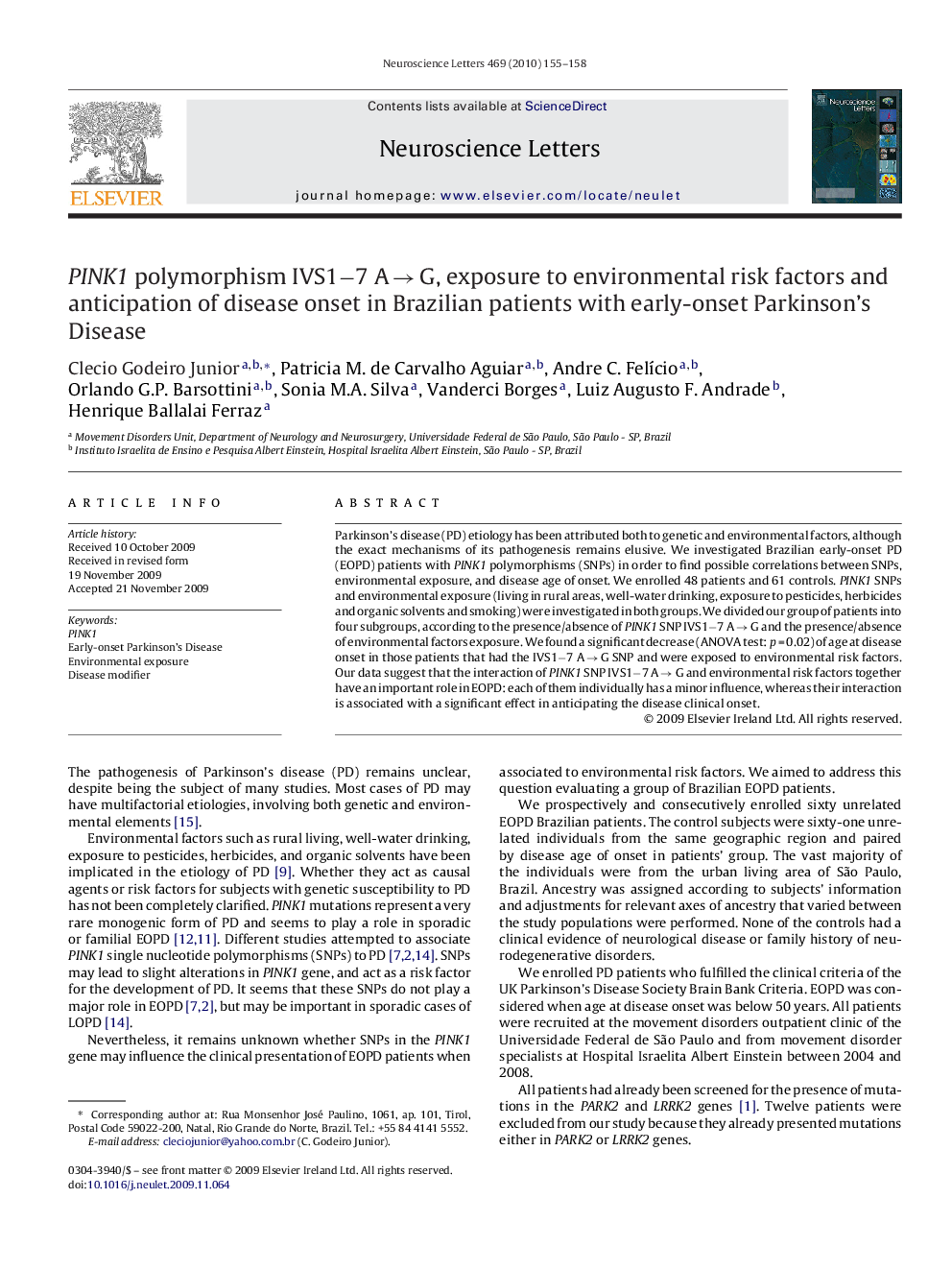| Article ID | Journal | Published Year | Pages | File Type |
|---|---|---|---|---|
| 6285409 | Neuroscience Letters | 2010 | 4 Pages |
Parkinson's disease (PD) etiology has been attributed both to genetic and environmental factors, although the exact mechanisms of its pathogenesis remains elusive. We investigated Brazilian early-onset PD (EOPD) patients with PINK1 polymorphisms (SNPs) in order to find possible correlations between SNPs, environmental exposure, and disease age of onset. We enrolled 48 patients and 61 controls. PINK1 SNPs and environmental exposure (living in rural areas, well-water drinking, exposure to pesticides, herbicides and organic solvents and smoking) were investigated in both groups. We divided our group of patients into four subgroups, according to the presence/absence of PINK1 SNP IVS1â7 A â G and the presence/absence of environmental factors exposure. We found a significant decrease (ANOVA test: p = 0.02) of age at disease onset in those patients that had the IVS1â7 A â G SNP and were exposed to environmental risk factors. Our data suggest that the interaction of PINK1 SNP IVS1â7 A â G and environmental risk factors together have an important role in EOPD: each of them individually has a minor influence, whereas their interaction is associated with a significant effect in anticipating the disease clinical onset.
